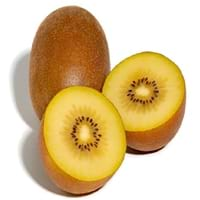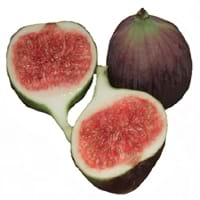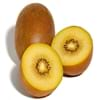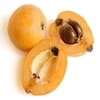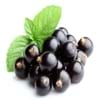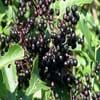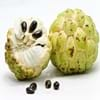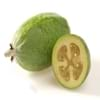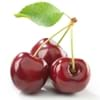Health Benefits
Asthma treatment, Heart care, Improves stomach health, Regulation of heart rate, Treatment of skin Diseases
Cancer prevention, Controls blood pressure, Heart care, Increase in haemoglobin, Prevents constipation, Prevents macular degeneration, Reduces nervous tension
General Benefits
Boosts immune system, Controls blood pressure, Eye care, Helps in weight loss
Controls blood pressure, Helps in weight loss, Maintains healthy cholesterol level, Strengthens bones
Skin Benefits
Brightens and lightens complexion, Heals sunburn, Reduces wrinkles, Skin rejuvenation, Treatment of acne, Treatment of dark spots, Treatment of skin diseases
Brightens and lightens complexion, Hydrates skin, Skin rejuvenation, Treatment of acne
Hair Benefits
Prevents hair loss, Promotes longer and healthier hair, Treatment of dandruff
Good conditioner, Regulates hair growth, Softening mask
Allergy Symptoms
Abdominal pains, Anaphylaxis, Breathing difficulty, Itching in tongue and other parts of mouth, Itching sensation in throat, Swelling of mouth, tongue or lips, Vomiting
Abdominal pains, Anaphylaxis, Coughing, Headaches, Hives, Itching, Nasal congestion, Skin rash, Sneezing, Sore throat, Swelling of hands
Side Effects
Allergic reaction, Diarrhoea, Skin rash, Possibly unsafe during pregnancy
Allergic reaction, Skin rash, Possibly unsafe during pregnancy
Best Time to Eat
Any time except an hour after meal
Best if taken as a breakfast (or empty stomach), Don't consume at night and before bed, Morning time (before lunch)
Vitamin B5 (Pantothenic Acid)
Vitamin C (Ascorbic Acid)
Vitamin K (Phyllochinone)
Phytosterol
Not Available
Calories in Fresh Fruit with Peel
Calories in Fresh Fruit without Peel
Not Available
Not Available
Calories in Frozen Form
Not Available
Season
Spring, Summer, Winter
Summer, Winter
Varieties
Qing Yuan #27, Qing Yuan #29, Qing Yuan #6 and Huang Yan
Abyad, Adriatic, Alma, Atreano, Bataglia, Black Bethlehem, Black Madeira, Black Mission, Brown Turkey, Sierra, Calimyrna, Kadota, Deanna, Figoin and Hardy Chicago Fig
Color
Brown, Yellow
Green, Purple, Red
Origin
China
Western Asia
Soil Type
Well-drained
Clay, Limestone, Loam, Sandy
Climatic Conditions
Cold, Sunny
Dry, Warm
Facts about
- The name Kiwi is due to its resemblance with 'Kiwi' bird.
- This variety of Kiwi was developed by New Zealand, it is not fuzzy on the outside and it has a taste reminiscent of the mango fruit.
- Fig tree is considered as a symbol of abundance, fertility and sweetness.
- The fig is made up of 55% of natural sugar so they are the sweetest fruits.
- Figs are used as a fat substitute in recipes.
Top Producer
Italy
Turkey
Other Countries
Chile, France, Greece, Iran, Japan, New Zealand, Portugal, Turkey, United States of America
Albania, Algeria, Brazil, Egypt, Iran, Morocco, Syria, Tunisia, United States of America
Top Importer
United States of America
France
Top Exporter
New Zealand
Turkey
Botanical Name
Actinidia chinensis
Ficus carica
Synonym
Not Available
Not Available
Subkingdom
Tracheobionta
Tracheobionta
Division
Magnoliophyta
Magnoliophyta
Class
Magnoliopsida
Magnoliopsida
Subclass
Dillenhidae
Alismidae
Family
Actinidiaceae
Moraceae
Species
A. chinensis
Ficus carica
Generic Group
Kiwi
Mulberry
Difference Between Gold Kiwi and Fig
We might think that Gold Kiwi and Fig are similar with respect to nutritional value and health benefits. But the nutrient content of both fruits is different. Gold Kiwi and Fig Facts such as their taste, shape, color, and size are also distinct. The difference between Gold Kiwi and Fig is explained here.
The amount of calories in 100 gm of fresh Gold Kiwi and Fig with peel is 60.00 kcal and 74.00 kcal and the amount of calories without peel is Not Available and Not Available respectively. Thus, Gold Kiwi and Fig belong to Low Calorie Fruits and Low Calorie Fruits category.These fruits might or might not differ with respect to their scientific classification. The order of Gold Kiwi and Fig is Ericales and Rosales respectively. Gold Kiwi belongs to Actinidiaceae family and Fig belongs to Moraceae family. Gold Kiwi belongs to Actinidia genus of A. chinensis species and Fig belongs to Ficus genus of Ficus carica species. Beings plants, both fruits belong to Plantae Kingdom.
